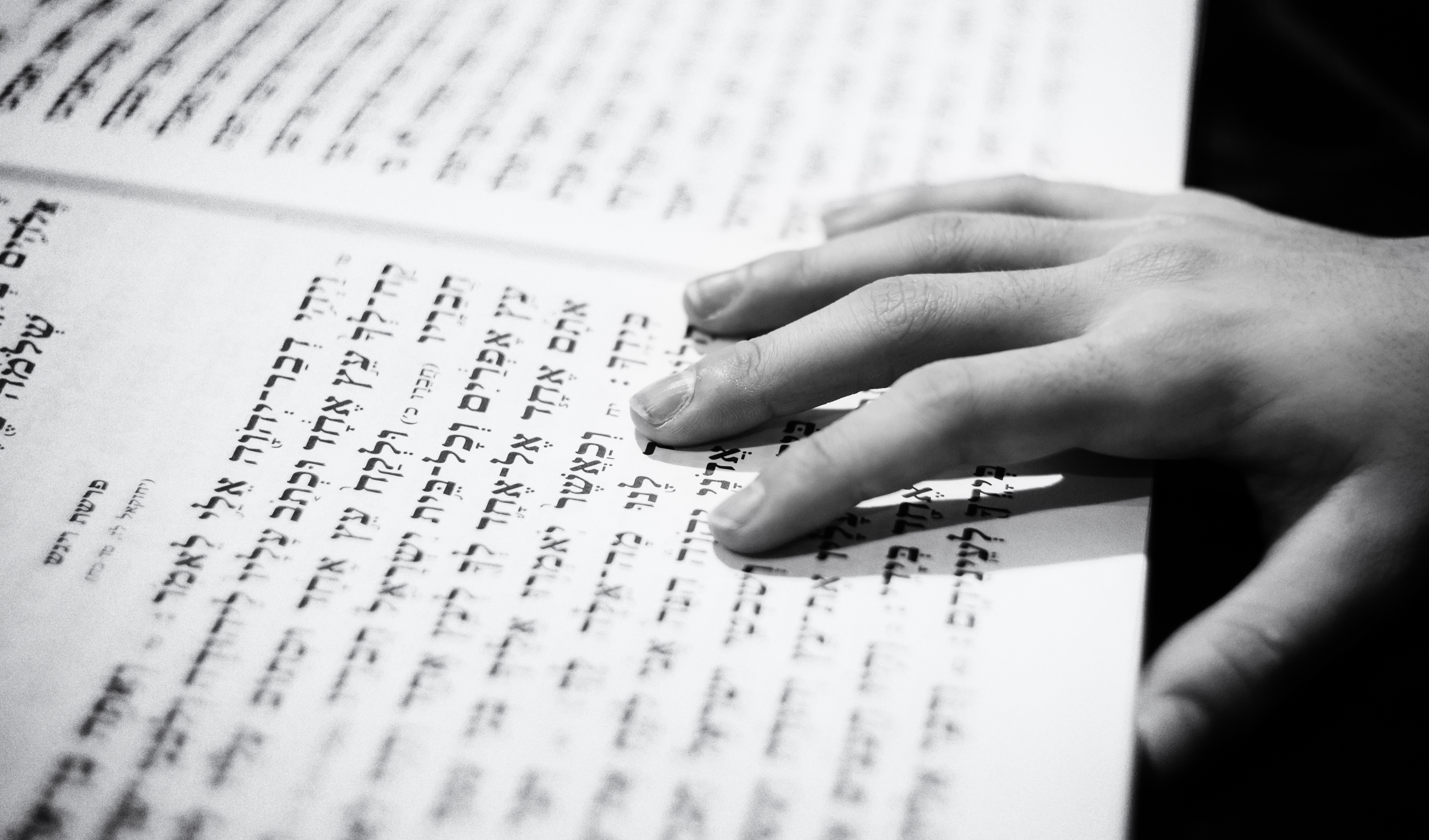“The Big 3” for Tefilla Student Engagement
The rationale – Making Tefilla Important
http://ejewishphilanthropy.com/how-to-put-tefilah-back-on-schools-agenda/
In the article above, the Rabbi Hirschfeld and Dr. Susan Wall from Pardes illustrates how Tefilla needs to be a priority for schools again. One of the reasons, I believe, Tefilla is not a main priority is because schools find it difficult to create positive student engagement models for Tefilla.
I have given several lectures and discussions about Tefilla in schools and community organizations, mainly to educators who are either experienced or in training. I usually begin by asking the group, why is Tefilla an integral part of any school/synagogue/informal educational group? The response I usually get are core, deep, and truly amazing Jewish values – Connecting students to G-d, G-d answers the prayer of children, Tefiila is a core Jewish value and essential to the creation of the world, Ability to ask G-d for whatever you want and more answers on the highest of levels. This usually indicates the “Ratzon”, the undying will, of the educators to connect their students to the highest of heights, the upper spheres of spirituality and true connection to the Almighty. However, when engaging students on a dreary morning in early December, when the sun has barely peaked out from the horizon and you sit them in front of a book in a Foreign Language (even for Israelis!), those lofty spiritual goals meet the mundane reality of student engagement, and the results aren’t always so favorable.
What is the solution? Setting the realistic goal. One goal: Students will view Tefilla as an important part of each day.
You may be reading this and saying, “Do I really need someone to tell me that? That’s such an obvious point!” You would also be 100% correct. However, many educators lose sight of the most basic and foundation premise of any student engagement – If the subject at hand is important, student engagement will be higher. If not, then one can expect a year full of chaos, fights, discipline issues and hardships. Many educators who are caught up with the lofty spiritual goals of Tefilla may lose sight of this foundational element, thus creating a frustrating environment both for themselves and their student.
The premise of this work is to create an environment in which students perceive that Tefilla is an important part of each and every day, whether it be in a classroom, informal educational program or synagogue. The Tefilla Project sets up a basic framework that can be adapted in any educational facility with the appropriate adjustments for age, gender, culture, background and geographical location. The Tefilla Project framework for student engagement is transferrable and accessible to any educator who is looking to create an effective system to engage their students in for Tefilla. How does it work? Here are the basic 3 Elements that create a positive student engagement model for Tefilla:
1) Interactive: Out loud!
2) Less is more: Gradual system of Tefilla engagement
3) Small Groups & Staff Facilitator
In the coming articles, I will illustrate in more detail how each element is central to creating a positive student engagement model for Tefilla in any setting. For the purpose of this article, I wanted to focus on the general framework and rationale behind choosing those three elements specifically. In this article I would like to paint the greater picture of why I chose those three specific principles.
If Tefilla is going to be an important part of the students’ day, then it must be relevant. Tefilla will only be relevant if the student actually engages in Tefilla. Chazal teach us that Tefilla is “Avoda Shebalev”, or the work of the heart. However, Tefilla on a mechanical level is “Avoda Shebapeh”, or the work of the mouth. The mechanics of Tefilla are words, songs, expression, phrases, verses from the Tanach and personal or national requests. In order to engage our young generation in the art of Tefilla, we must first relate to the basic mechanics involved – get them to say it out loud!
The first element is something that has historically worked but for many social, historical and cultural reasons we have moven away from a system that work: Saying the Tefillot out loud! The best illustration for why this works is to close your eyes and picture your favourite Tefilla experience. I bet you (at least 99%) that it wasn’t mumbling words under your breath. For many people it was the inspirational Friday night Tefilla at the Kotel, in a Carlebach Minyan, at your camp, or for others it was singing your favourite tune at the top of your lungs with your community. The key – it was said out loud. Ask any Sefaradi young adult what Tefila they remember in their Syngaogue growing up, whether they are currently observant, traditional or not, they will most likely recall the tunes and chants. There is a beautiful Sefaradi tradition when all of the young children go up to the Sefer Torah, put their hands on it and say out loud “ימלוך ה’ לעולם אלוקיך ציון לדור ודור הללוי-ה” and the crowd responds. The first time I experienced this tradition, I thought to myself – why can’t all Tefilla look like this? Why do we insist on singing Hallel out loud but when it comes to Ashrei, Halleluyas, or even the Shema we insist on the students saying it to themselves quietly? Is that really going to help them learn the Tefillot more effectively? What tone are we setting for the Tefilla? I would rather have the Tefilla a lively and fluid experience rather than a dry and librarian-style routine. Wouldn’t you?
The second element is the clear and logical Talmudic concept of “one who holds too much holds nothing at all”. It’s the Talmudic version of “don’t bite off more than you can chew”. One of the Achilles heals of all educators is over-zealousness, or trying to take on too much. Good educators know what load the students can take and how to set realistic yet challenging expectations. It’s one of the true arts of fine education, and Tefilla is no exception to that rule. How much Tefilla is “too much”? What is the “Tefilla ceiling” of students? Should a grade 7 student necessarily have to say significantly more than a grade 4 student in order to have a more meaningful Tefilla? “Less is More” in essence is about creating a gradual system of Tefilla engagement.
This holds true for all educational subjects. A subject like math is differentiated based on grade and the level of students in the class or school. Tefilla is similar, but quite inverse. For young children, ages 2 – 6, Tefilla comes naturally and pours out of them. They are truly built for connection, innocence and will buy into any concept presented to them. However, once a child’s intellect develops they start to challenge the concept of Tefilla at its very core – Why? To Whom? For what purpose? How many times do we need to say Tefilla? From ages 7 or 8 is when the Tefilla begins to feel challenging, yet still manageable, and from the age of 9 and up the uphill battle usually begins. What’s the trick? To put a system in place at a very young age, when they still have buy-in that will withstand the older development stages as well. A system that all students can work within its framework, and can be adapted by each teacher.
Rabbi Yosef Caro in his Shulchan Aruch teaches us that “It is better to say less with more kavannah than say more with less kavannah” (in the context of Tachanun, albeit, but the concept rings true across the board). That is a concept even for adults who are regular Tefilla attendees. How much more so is this concept relevant for teaching our children the art of Tefilla. Do we really want to “shove it down their throat”? Or, as I’ve heard it from several seasoned educators, “If they do the Tefilla enough, they will eventually learn to ‘daven’ on their own”. First off, I don’t know if that theory has been proven true, but it’s worth investigating definitely. Second, even if it is true, what are we sacrificing in the process? Is it fair to set the stage for students to constantly disrupt, disobey, and be bored and unengaged with Tefilla just so that they hopefully will become ‘Daily Daveners’ one day? (BTW What is the percentage of current Synagogue members of all denominations who regularly attend Tefilla?)
The third element is creating a small group setting for teaching Tefilla, and not using the atrium/Beit Knesset/Beit Midrash as the default location for breeding Tefilla experts. This is what I like to call “Breaking the mold”. My greatest success was when I was with a class in an isolated environment like a classroom or a small space, with 15 – 30 students at a time, not trying to navigate Tefilla for 100 or 200 students in a large space. Think about it: do we try and teach key subjects such as math and sciences of even Tanach in large group settings? If not, why should Tefilla be any different? I will expound on this point more in my article called “Breaking the Mold of Tefilla”.
The focus of any positive Tefilla student engagement model is always focusing on one goal: Students will view Tefilla as an important part of their everyday activities, the key word being: IMPORTANT. Once that is established, all of your methods, whether they succeed or fail initially, will eventually come to fruition. If a student, camper or teen views something as important, they will focus and give it their best effort. If not, then all the bells and whistles you incorporate will fall on deaf ears. How do we create the equation between Tefilla and Important? By offering a model that students can follow. Success breeds success. A student who walks into Tefilla saying: “I can do this”, “It’s not that bad” will be open to your ideas, songs, concepts of talking to G-d and any other challenging notion. Positive student engagement in Tefilla is the key and it’s more important for us educators to focus on what not to do rather than what to include. Less is more.
Rabbi Ariel Tal
Founder, The Tefilla Project





